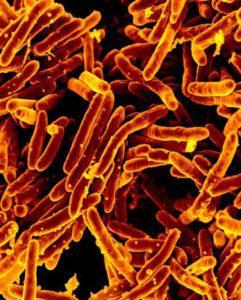The formation of lung granuloma is the pathological hallmark of pulmonary Tuberculosis disease resulting from the direct struggle between the immune system and Mycobacterium tuberculosis. Granuloma mostly act to contain the dissemination of TB but, in some cases, the bacteria can escape from the granuloma and spread to other areas of the lung. Depending on the final fate of the bacteria – contained or disseminated – granuloma can either be sterile or non-sterile. T cells are a major cellular component of the granuloma and the balance of cytokines they produce is believed to be the driver of granuloma success or failure in containing the bacteria.
The role of adaptive immunity in controlling M.tuberculosis is well documented from human and animal models of the disease. However, these data are from observations made in the systemic circulation even though TB is a tissue-associated disease.
A group of researchers at the Kwa-Zulu Natal Research Institute for Tuberculosis and HIV (K-RITH) – soon to be renamed Africa Health Research Institute (AHRI) – are working to gain insight into the immunological dynamics that occur in response to TB in the human lung. Working together with hospitals in Durban, South Africa, the group uses medically resected lung tissue from individuals infected with TB to study the immune responses in tissue and compare that with matched blood.
As described at the International Congress of Immunology (ICI) 2016 by Paul Ogongo, a PhD student in the Alasdair Leslie lab, their initial results show a higher frequency of cytokine production to M.tuberculosis antigens in vitro at the site of disease than in circulation. They also observe significant enrichment of subpopulations of T cells in the lung than in circulation and these are the cells with the greatest potential to produce multiple cytokines. This is particularly important because it suggests that cytokines that are useful in determining the outcome of a TB infection but are produced in low amounts could be missed by looking at systemic circulation.They are also sequencing individual granuloma associated cells and comparing that with cells from systemic circulation in the hope of finding differences in transcription signatures in the two compartments.
The impact of this study is that it could provide insight on new TB vaccine design strategies. A vaccine against TB that targets the lung microenvironment could increase immune killing of the bacteria early on in infection before the bacteria develops immune evasion mechanisms.
More information on the conference – International Congress of Immunology 2016
Article by Thandeka Moyo












